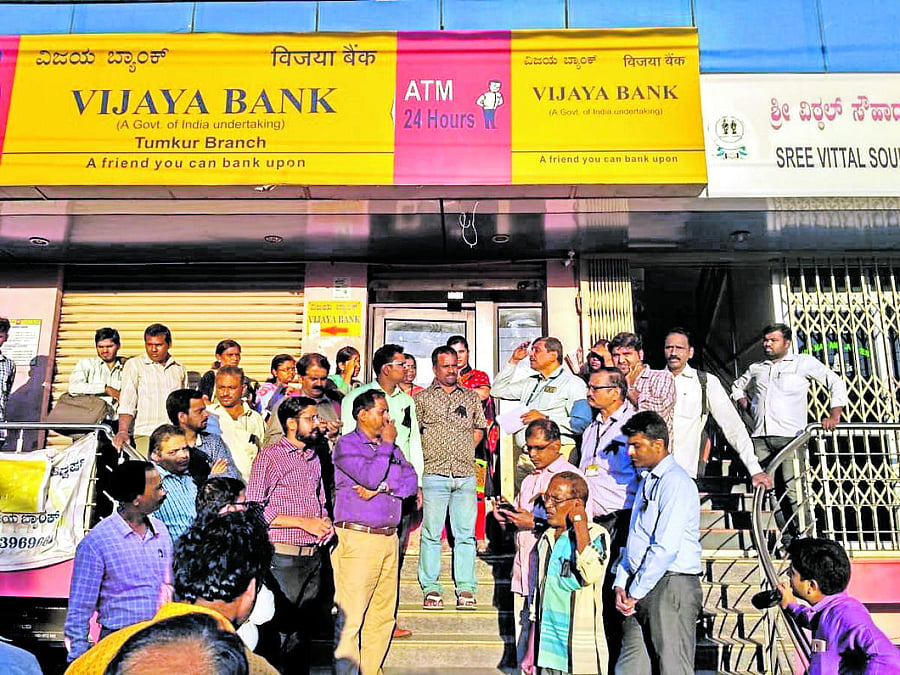Both the earlier UPA and the current NDA governments have come out in favour of having far fewer but much larger public sector banks which currently number 21. In keeping with this, the government has decided to merge three public sector banks – Bank of Baroda, Vijaya Bank and Dena Bank. Theoretically, merger of synergistic businesses gives the bigger new player greater clout in the marketplace and also creates the scope for reaping economies of scale in terms of cost and efficiency. Plus, by merging a weak bank (Dena) with two stronger ones, the government will also address the problem of high levels of bad debt among public sector banks. Of the 11 weak banks put by Reserve Bank of India under “prompt corrective action” (PCA), which makes them half comatose by not letting them give fresh loans, this move takes care of one. The earlier government decision to get LIC to take over IDBI Bank takes care of another PCA bank. Thus, by simply rejigging its portfolio through the merger and acquisition route, the government has found a painless way of addressing the issue of sickness among public sector banks.
But the question is: will the merger of strong and weak public sector banks work? Mergers, per se, across the world more often than not do not work. Moreover, in the case of banks, big is not necessarily beautiful. When banks across the world were severely hit by the financial crisis of 2008, the US, which has thousands of banks, and Spain, which has just hundreds, were equally adversely affected. During the crisis, large banks that invested heavily in structured financial paper issued against housing loans to sub-prime (financially below par) borrowers came to grief when the bubble in such loans burst. This led to a return to the basics – realising that banks thrive primarily on giving loans to viable businesses. Medium-sized regional banks with deep local knowledge, which successfully lend to small and medium enterprises that critically power economic growth, can be the healthiest. In banking, size has nothing to do with health.
Additionally, bank mergers can reap economies of scale only if they “rationalise” on branches -- close down those that would end up competing with each other. This will render a significant number of staff redundant, at a time when rapid introduction of information technology is also allowing banks to make do with fewer hands. The government has promised that there will be no retrenchment, but you cannot have both economies of scale and pre-merger staff strength. But, perhaps, the biggest argument against such mergers is that they fail to address the basic cause of poor-quality lending – political interference in banks leading to sub-standard top management and poor governance.

